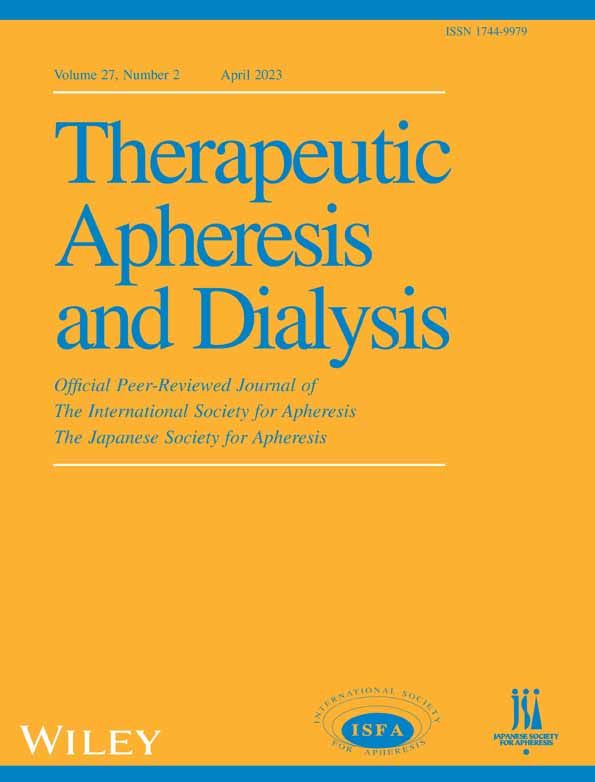Simplified geriatric nutritional risk index for assessing nutritional status and stratifying mortality risk in patients receiving maintenance hemodialysis
Abstract
Introduction
The geriatric nutritional risk index (GNRI) is a widely used tool for nutritional assessment in patients receiving hemodialysis. The simplification of the GNRI calculation would be more useful for easier screening of malnutrition and for providing an intuitive stratification of mortality risk.
Methods
We retrospectively evaluated 218 Japanese patients receiving maintenance hemodialysis at two hemodialysis centers. The primary outcome was all-cause mortality. The main exposure was a simplified GNRI (sGNRI) calculated as follows: sGNRI = serum albumin (g/dL) + 0.1 × body mass index (kg/m2).
Results
During the median 4.4-year follow-up, 56 patients died. Multivariable-adjusted Cox proportional hazard risk models showed that patients with a lower sGNRI showed a significantly increased mortality risk. No significant difference was observed between the original GNRI and sGNRI regarding mortality predictability.
Conclusion
sGNRI is as useful as the original GNRI for screening for malnutrition and stratifying hemodialysis patients at increased mortality risk.
CONFLICT OF INTEREST
The authors declare no conflict of interest.
Open Research
DATA AVAILABILITY STATEMENT
The datasets generated during and/or analyzed during the current study are available from the corresponding author upon reasonable request.




